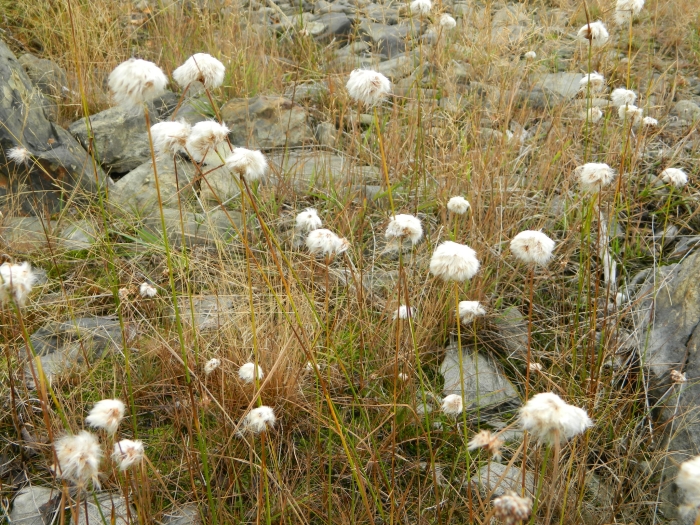Virginia Cottongrass
(Eriophorum virginicum)
Virginia Cottongrass (Eriophorum virginicum)
/
/

Louis Imbeau
CC BY 4.0
Image By:
Louis Imbeau
Recorded By:
Copyright:
CC BY 4.0
Copyright Notice:
Photo by: Louis Imbeau | License Type: CC BY 4.0 | License URL: http://creativecommons.org/licenses/by/4.0/ | Rights Holder: Louis Imbeau | Publisher: iNaturalist | Date Created: 2019-09-25T09:24:27-07:00 |










Estimated Native Range
Summary
Eriophorum virginicum, commonly known as Virginia cottongrass, is a perennial sedge native to the acidic wetlands, bogs, and fens of eastern North America. It typically grows to a height of 1-3 feet (30-90 cm) and is noted for its distinctive fluffy, cotton-like seed heads that emerge in late summer, providing a unique textural element to the landscape. The plant’s foliage is grass-like, and the white seed heads can be quite showy, catching the eye as they sway in the breeze.
Virginia cottongrass is valued for its ability to thrive in challenging wetland conditions, making it an excellent choice for wetland restoration projects and water garden features. It is also used for its ornamental appeal in naturalistic plantings. This sedge requires full sun to part shade and prefers consistently wet, acidic soils. It is relatively low maintenance but may need to be managed to prevent it from spreading too aggressively in garden settings. While it has no major disease or pest issues, it can become invasive if conditions allow for unchecked growth.CC BY-SA 4.0
Virginia cottongrass is valued for its ability to thrive in challenging wetland conditions, making it an excellent choice for wetland restoration projects and water garden features. It is also used for its ornamental appeal in naturalistic plantings. This sedge requires full sun to part shade and prefers consistently wet, acidic soils. It is relatively low maintenance but may need to be managed to prevent it from spreading too aggressively in garden settings. While it has no major disease or pest issues, it can become invasive if conditions allow for unchecked growth.CC BY-SA 4.0
Plant Description
- Plant Type: Grass
- Height: 1-3.9 feet
- Width: 1-1.5 feet
- Growth Rate: Slow, Moderate
- Flower Color: N/A
- Flowering Season: Summer, Fall
- Leaf Retention: Deciduous
Growth Requirements
- Sun: Full Sun, Part Shade
- Water: Medium
- Drainage: Fast, Medium, Slow
Common Uses
Bird Garden, Low Maintenance, Water Garden
Natural Habitat
Acidic wetlands, bogs, and fens of eastern North America
Other Names
Common Names: Rusty Cotton Grass, Virginia Cottongrass
Scientific Names: , Eriophorum virginicum, Eriophoropsis virginica, Eriophorum confertissimum, Eriophorum virginianum, Eriophorum virginicum f. album, Eriophorum virginicum f. virginicum, Eriophorum virginicum var. album, Eriophorum virginicum var. confertissimum, Eriophorum virginicum var. gracile
GBIF Accepted Name: